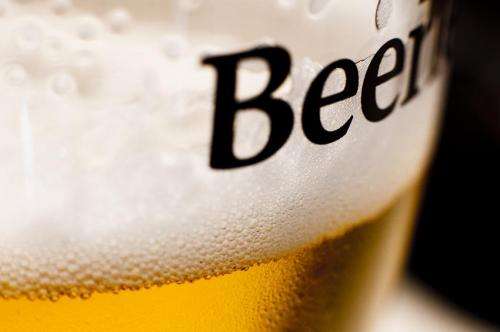Improving the taste of alcohol-free beer with aromas from the regular beer

Consumers often complain that alcohol-free beer is tasteless, but some of the aromas it is lacking can be carried across from regular beer. Researchers from the University of Valladolid (Spain) have developed the technique and a panel of tasters has confirmed its effectiveness.
The alcohol in beer acts as a solvent for a variety of aromatic compounds; therefore, when it is eliminated, as in non-alcoholic beers, the final product loses aromas and some of its taste. It is difficult to recover these compounds, but researchers from the University of Valladolid have done just this using a pervaporation process.
"This technique consists in using a semipermeable membrane to separate two fractions from alcoholic beer: one liquid phase in which alcohol is retained, and another gaseous phase, where the aromatic compounds come in," Carlos A. Blanco, one of the authors, explains to SINC. "Then, this gaseous phase can be condensed, the aromatic compounds extracted and added to non-alcoholic beer."
To conduct the study, the scientists used a special beer (with 5.5% alcohol) and another reserve beer (6.5%) from which they extracted three aromatic compounds: ethyl acetate, isoamyl acetate and isobutyl alcohol. They then added these substances to two 'almost' alcohol-free beers on the market: low-alcohol beer (less than 1% ABV) and alcohol-free beer (less than 0.1% ABV).
A panel of experts tasted them. 90% of tasters preferred enriched low-alcohol beer instead of their original factory counterparts, and this percentage rose to 80% for alcohol-free beer. The figures have been published in the Journal of Food Engineering.
"In light of these results, we conclude that the taste is improved, and thus the quality of this 'alcohol-free' beer, as the majority of panellists preferred the beer with aromas to the original," Blanco confirms.
The researchers recognise that this technique cannot yet capture all the aromas and tastes associated with alcoholic beer, but it does show progress in making 'alcohol-free' varieties more palatable for the consumer.
Spain is the primary producer and consumer of alcohol-free beer in the European Union. Around 13% of the beer sold in this country is alcohol-free, consumption of which has increased in recent years due to driving restrictions and for health reasons.
More information: Álvaro del Olmo, Carlos A. Blanco, Laura Palacio, Pedro Prádanos, Antonio Hernández. "Pervaporation methodology for improving alcohol-free beer quality through aroma recovery". Journal of Food Engineering 133: 1–8, 2014.



















